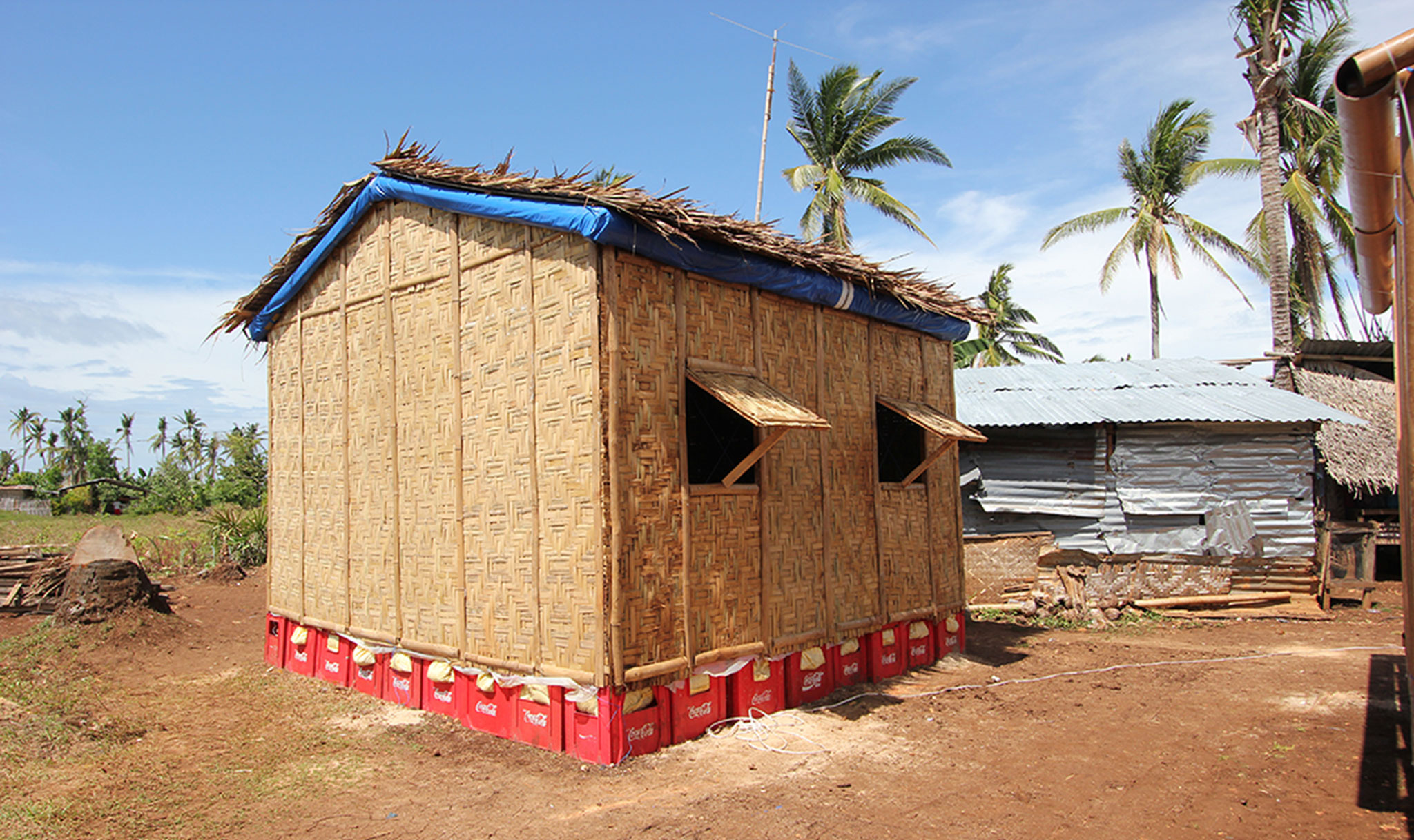Hannah Arendt, “We Refugees,” The Menorah Journal, (Winter, 1943).
Shigeru Ban Architects, “Paper Emergency Shelters for UNHCR—Byumba Refugee Camp, Rwanda, 1999,” →. This essay focuses as much on readings of this project as the project itself; those readings are the object of the critique that follows.
In December 1998, UNHCR reported that, in Rwanda, it “supports the forestry programme that is redressing damage done to the environment by massive shelter programmes and refugee camps. In addition to reforestation programmes, UNHCR has also introduced, in both camps and settlement sites, energy-saving stoves that reduce energy lost by open cooking fires by at least 60 per cent. The use of ‘paper poles’ for shelter construction is also being investigated.” UNHCR, “UNHCR Global Appeal 1999—Rwanda,” 1 December 1998, →.
Ban described the tubes as “paper”; I use the term “cardboard” because it more precisely defines the material of the tubes and also extracts the project from the category of “paper architecture” that Ban uses for projects like the emergency shelters at Gihembe. Both “paper architecture” and “cardboard architecture” have genealogies in architecture; Ban’s employment of the former term over the latter might suggest his work be read as a materialization of what otherwise exists as utopian architecture “on paper.”
Michael Kimmelman, “Shigeru Ban: Building to Last, Just Long Enough,” New York Times, 22 May 2007, →.
See →.
On the prehistory of Gihembe, see René Lemarchand, The Dynamics of Violence in Central Africa (Philadelphia: University of Pennsylvania Press, 2009); Gerard Prunier, Africa’s World War: Congo, the Rwandan Genocide, and the Making of a Continental Catastrophe (New York: Oxford University Press, 2009); and Filip Reyntjens, The Great African War: Congo and Regional Geopolotics, 1996-2006 (Cambridge: Cambridge University Press, 2009).
Michael Wakabi and Gaaki Kigambo, “Congo: Refugee Life and the Cycle of War,” The East African, 9 November 2012, →.
Emily A. Lynch, “Mudende: Trauma and Massacre in a Refugee Camp,” Oral History Forum 33 (2013).
In Rwandan refugee camps like Gihembe, “nearly every Congolese refugee relied exclusively on UNHCR for basic needs, including food, water, health care, education, and clothing.” United States Committee for Refugees and Immigrants, “U.S. Committee for Refugees World Refugee Survey 2003 - Rwanda,” 1 June 2003, →.
UNHCR Rwanda, “Resettlement: A Life-Changing Journey,” June 2014, →.
See Eric Kabeera, “Life Inside Gihembe Refugee Camp,” New Times, 25 June 2012, →.
Ibid., Lynch, 8.
On the use of wood for building material at Gihembe, see UNHCR Rwanda, “Environmental Management in Refugee Situations Learning Workshop,” September 2009, →.
See, for example, Architecture for Humanity, Design Like You Give a Damn: Architectural Responses to Humanitarian Crises (New York: Metropolis Books, 2006).
Slavoj Žižek, In Defense of Lost Causes (New York: Verso, 2009), 425.
Museum of Modern Art Department of Communications, “Insecurities Press Announcement,” 5 May 2016.
Shigeru Ban Architects, “Alvar Aalto—Tokyo, Japan, 1986,” →.
Among its contemporary manifestations is the 2016 Venice Biennale of Architecture; oriented around the theme of “Reporting from the Front,” the Biennale attends to architecture’s encounter with refugees in the national pavilions of Austria and Germany as well as in a number of other projects.
Hannah Arendt, “The Decline of the Nation-State and the End of the Rights of Man,” in The Origins of Totalitarianism (New York: Meridian, 1958), 284.
Ibid., Arendt, “The Decline of the Nation-State and the End of the Rights of Man,” 293–294.
Walter Benjamin, “Theses on the Philosophy of History,” in Illuminations, trans. Harry Zorn (New York: Schocken, 1969), 257. On Arendt and Benjamin, see Arendt und Benjamin: Texte, Briefe, Dokumente, ed. Detlev Schöttker and Erdmut Wizisla (Berlin: Suhrkamp, 2006).
Ernesto González, “Working With the Private Sector Through Cash-Based Interventions,” Inter Agency Working Group on Disaster Preparedness for East and Central Africa, 16 September 2015, →. On voucher humanitarianism, see Daniel Bertrand Monk and Andrew Herscher, “The New Universalism: Refuges and Refugees Between Global History and Voucher Humanitarianism,” Grey Room 61 (2015).
John Paul Sesonga, “Rwanda: WFP Introduces Cash Transfers to Refugees in Gihembe Camp,” World Food Program, 19 February 2014, →.
Superhumanity, a project by e-flux Architecture at the 3rd Istanbul Design Biennial, is produced in cooperation with the Istanbul Design Biennial, the National Museum of Modern and Contemporary Art, Korea, the Govett-Brewster Art Gallery, New Zealand, and the Ernst Schering Foundation.
